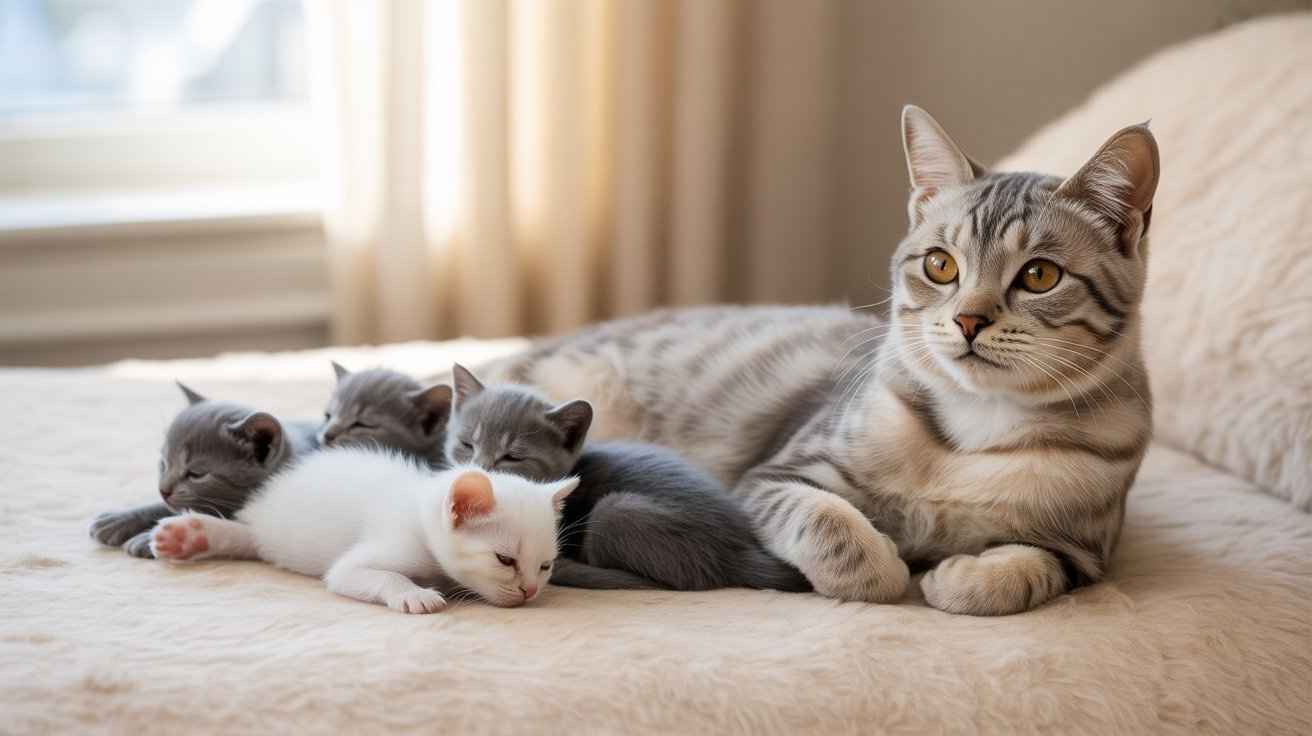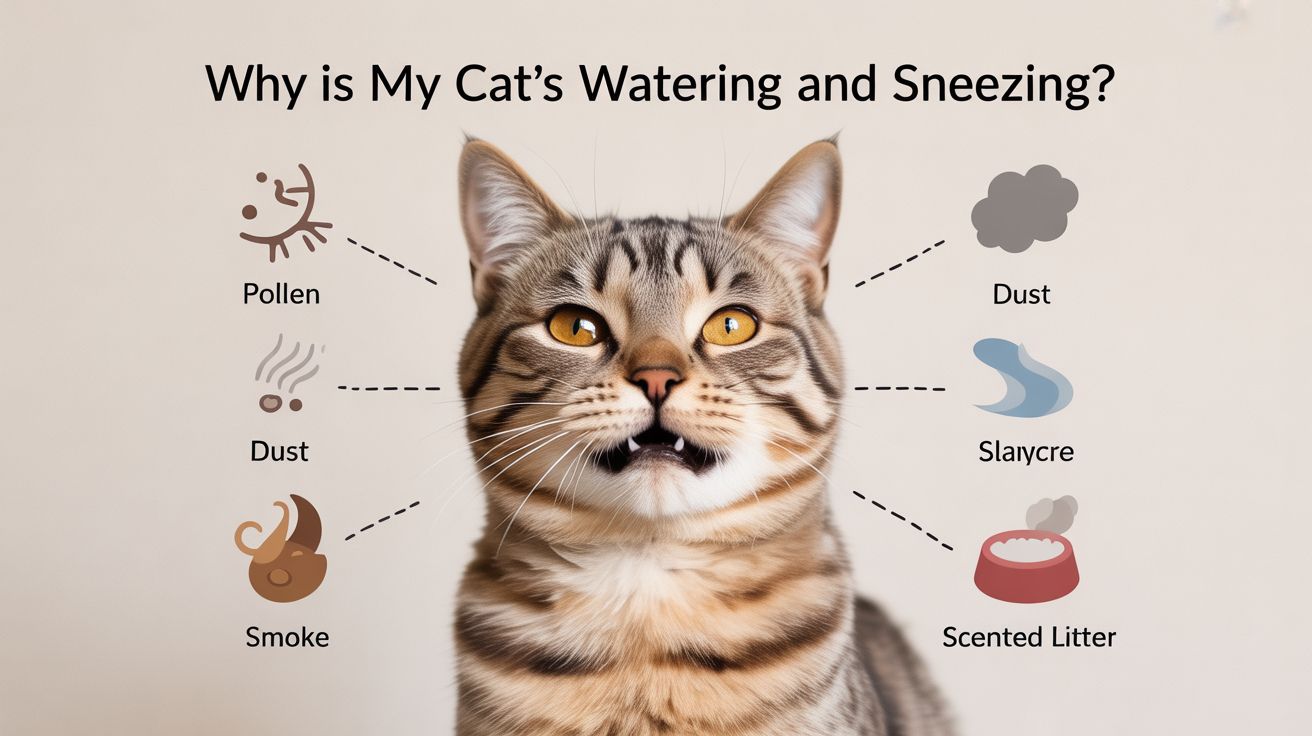Why is my cat itchy but has no fleas? Here are 9 common reasons, including allergies, stress, grooming, skin infections, mites, and hormonal problems.
Why Is My Cat Itchy But No Fleas?
If you’ve been asking yourself, “Why is my cat itchy but no fleas?” you’re not alone. Many cat owners notice their pets scratching, licking, or overgrooming even when no fleas are visible.
Persistent itching—also known as feline pruritus—can signal a wide range of issues beyond flea bites, from allergies and mites to skin infections or stress-related behaviours.
Understanding the root cause is key to helping your cat find relief. This guide explains the most common reasons for cat skin irritation and what steps you should take next.
9 Reasons Why Your is Cat Itchy But No Fleas
| WHY YOUR CAT IS ITCHY | WHAT YOU ‘ll see | What to do |
|---|---|---|
| Stress or Boredom | Licking or biting fur, hair loss | Give toys, play time, calm space, vet if needed |
| Allergies (Dust, Pollen, Mold) | Scratching, red, or irritated skin | Keep house clean, air purifier, vet meds |
| Food Allergies | Itchy skin, scratching, and sometimes hair loss | Try special or hypoallergenic cat food |
| Irritation from Products | Red or itchy spots | Use gentle soaps/shampoos, avoid harsh cleaners |
| Bacterial Infection | Smelly fur, scabs, bumps | A vet may prescribe antibiotics or cream |
| Fungal Infection (Ringworm/Yeast) | Patchy skin, itching like flea bites | Vet antifungal medicine, clean environment |
| Dry Skin | Flaky, itchy skin | Allergies (Dust, Pollen, Mould) |
| Hormone Problems | Thinning fur, itchy skin | Vet check-up and treatment for hormone issues |
| Other Parasites (Mites/Lice) | Intense itching, hair loss | Vet diagnosis and anti-parasite treatment |
Identifying Signs When is Your Cat Itchy But No Fleas
- Vet Consultation Needed: Persistent itching, severe hair loss, or signs of infection require professional evaluation.
- Hair Loss: Bald patches, thinning fur, or uneven coat.
- Redness & Scabs: Irritated skin, minor sores, or flaky patches indicate feline skin conditions.
- Excessive Grooming: Constant scratching, licking, or biting at specific areas.
- Behavioural Changes: Restlessness, irritability, or disrupted sleep patterns.
- A strong, unpleasant odour or greasy fur is a clear indication that bacterial or yeast infections are present.
Treatment Options for Itchy Cats Without Fleas
- Behavioural Support: Monitor cat scratching behaviour and provide enrichment to reduce stress-related itching.
- Veterinary Treatments: Antihistamines for cat allergy symptoms, steroids to reduce inflammation, antifungals or antibiotics for infections.
- Home Remedies: Oatmeal baths, hypoallergenic shampoos, and avoiding harsh soaps or chemicals.
- Dietary Adjustments: Elimination diets to identify food allergies, switching to hypoallergenic or limited-ingredient food.
- Environmental Adjustments: Reduce exposure to dust, pollen, and mould; clean bedding; use air purifiers.

Allergies: Environmental, Food & Contact
Environmental allergens like pollen, dust, or mould can trigger atopic dermatitis, causing seasonal scratching. Food allergies, often from proteins such as chicken, beef, or fish, may lead to itching, overgrooming, or digestive issues.
Certain cleaners, fabrics, litter, or plastic bowls can cause contact dermatitis. Common signs of allergies in pets include red skin, excessive licking of their paws or belly, and recurring ear infections. May suggest elimination diets, allergy testing, or environmental changes to pinpoint and manage triggers.
Skin Infections: Bacterial, Fungal & Yeast
When asking, “Why is my cat itchy but has no fleas?”, consider skin infections. Excessive scratching can damage skin, allowing bacteria or yeast to grow.
Bacterial infections may cause redness, swelling, and sores, while yeast infections lead to greasy or foul-smelling patches. Ringworm, a fungal infection, causes circular bald spots, scaling, and persistent irritation.
These often develop secondary to allergies or mites. Vets perform cultures or skin scrapings for accurate diagnosis, ensuring proper treatment with antibiotics, antifungals, or topical therapies to relieve discomfort.

Dry Skin & Nutritional Deficiencies
Sometimes the answer to “why is my cat itchy but no fleas?” is dry skin. Low humidity, harsh grooming products, or overbathing can strip natural oils, causing itching, dandruff, and flaking.
Nutritional deficiencies also affect skin health; lack of essential fatty acids like omega-3s can lead to dull coats, shedding, and chronic skin irritation. A lack of vitamins and minerals can exacerbate the issue.
Solutions include environmental changes (humidifiers) and a complete, balanced diet with adequate omega-3s for long-term skin support.
Stress & Overgrooming

If medical causes have been ruled out, your cat might be experiencing itching due to stress. Chronic stress or anxiety can cause psychogenic alopecia, where cats overgroom to self-soothe. This often leads to bald patches on the belly, inner thighs, or front legs, even without skin disease.
Triggers include household changes, lack of enrichment, or conflicts with other pets. Managing stress-related itching involves increasing playtime, providing hiding spots, reducing stressors, and sometimes vet-prescribed anti-anxiety treatments to support both mental and physical health.
Prevention Tips & When to Call a Vet
Preventing itching starts with proper care. Regular grooming helps remove loose hair and reduce cat skin irritation, while a balanced diet with essential fatty acids supports a healthy coat.
Flea prevention should continue year-round, even if fleas aren’t visible, to avoid hidden flea allergy dermatitis. Keep your environment clean and minimise stress to help reduce scratching behaviour.
You should contact a veterinarian if your cat develops bald patches, open sores, or persistent itching, or if home remedies fail to relieve discomfort. Tackling problems promptly helps prevent complications and ensures that your cat stays healthy and comfortable.
Conclusion
If you’re wondering, “Why is my cat itchy but has no fleas?” remember that multiple factors can be at play, including allergies, parasites, infections, dry skin, or stress. Identifying the underlying cause is crucial for effective treatment.
Consulting a veterinarian ensures the correct diagnosis and management plan, whether through flea control, dietary changes, medications, or environmental adjustments. Early intervention helps your cat find relief quickly and prevents long-term skin damage.
FAQs
Q1: Why is my cat itchy but has no fleas?
Causes include environmental or food allergies, infections, dry skin, and hormonal disorders.
Q2: Can food allergies make a cat itch without fleas?
Yes, proteins or additives can trigger feline dermatitis and pruritus in cats.
Q3: When should I see a vet for my itchy cat?
If scratching persists, hair loss or scabs appear, or infection is suspected, consult a healthcare professional.
Q4: Are home remedies effective?
Safe options like oatmeal baths and hypoallergenic shampoos can relieve mild itching.
Q5: How can I prevent future itching?
Regular grooming, balanced diet, allergen-free environment, and routine vet visits.

Hi, I’m Sana Sajid!I’m the voice behind CatsCare.blog, sharing my 10+ years of hands-on cat care experience. With a diploma in animal care, I offer practical tips, trusted advice, and easy-to-follow guides to help keep your cats healthy and happy.
When I’m not writing, I spend time with my own cats or exploring the latest developments in feline health. Follow CatsCare.blog for expert insights and real cat stories!






One thought on “Why Is My Cat Itchy But No Fleas? Top 9 causes to Check”